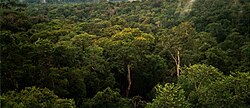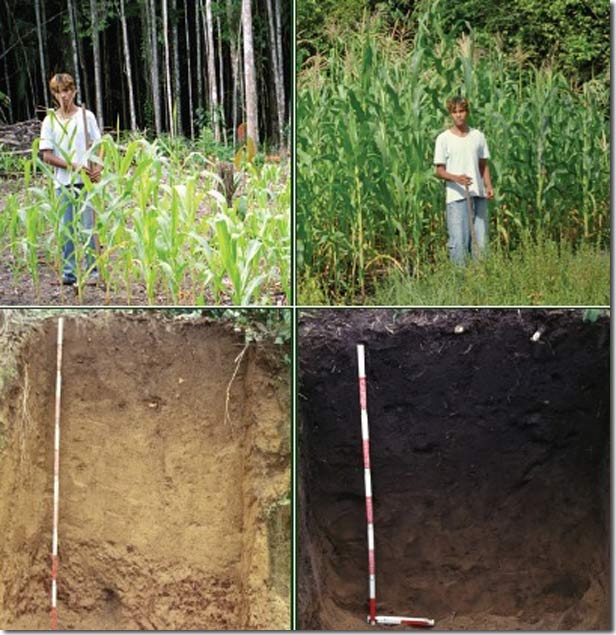Industrial agriculture has made deserts of previously fertile fields. Yet they don’t have to stay that way for ever—barren terrain can soon regain its fruitfulness with the miracle of terra preta, the ‘black earth’.



Will We Soon Have Terra Preta, Too?There was great excitement when researchers began to examine what was possibly the most fertile soil in the world a few years ago—terra preta, the Portuguese term for ‘black earth’, in the Amazon region. It was man-made and had lost nothing of its excellent quality for thousands of years (the oldest such soil is approximately 8,000 years old). The core element is biochar (mostly charcoal), which is thought to remain stable in the ground virtually indefinitely and store and retain nutrients and water. Other components include compost, various-sized clay fragments, human and animal waste, organic waste including bones and fish bones, as well as presumably aquatic biomass such as algae. This mixture ensures a considerably higher concentration of calcium, magnesium, phosphor and potassium in this soil than the ground around it. Researchers also discovered that an above-average number of fungi appear in this black soil, which also encourages plant growth.

More organisms live in a handful of healthy earth than there are people in the world.
Terra preta is beneficial in a number of ways: a) it is able to bind nitrogen and carbon from the air in the ground; b) the humus content remains stable over long periods; c) the biochar’s large inner surface and the increased humus content means that nutrients entering the ground remain available to plants and are not lost; d) water is absorbed and stored in high quantities; and e) the eventual yield is considerably higher than in the surrounding area. Furthermore, the soil can even regulate itself. When, after its discovery, farmers began to market it, whole areas were cleared within just a few decades. But after the Brazilian government passed an export ban for fear of losing this “Amazonian treasure”, the mined soil grew back within ten to twenty years. The phenomenon hasn’t yet been fully explained; it is assumed that it is linked to the optimally functioning microbiology of terra preta, amongst other things.
Also still largely unknown is how this soil came to be. Any information about it “was lost along with the eradication of the original inhabitants of the Amazon region,” writes Gerald Dunst, soil expert from the eco-region of Kaindorf in Styria (Austria), in his book Humusaufbau - Chance für Landwirtschaft und Klima (“Producing Humus—A Chance for Agriculture and Climate”). One hypothesis is that biochar was composted together with organic waste.
Man-made black soil with legendary properties—the discovery in the Amazon should be a clarion call to the whole world. Farmer Herbert Mietke from Lindendorf near Seelow in Brandenburg (Germany) was one of the first to try to improve his sandy earth this way. Its humus content was a mere 0.7 per cent (akin to desert conditions) with poor water absorption after rainfall, and its yield was accordingly small.
Three years ago, together with Bruno Glaser from the University of Bayreuth, he mixed 30 tons of compost and up to 20 tons of biochar (charcoal) into the upper layer of soil over one hectare. Through mineralisation, the compost provides nutrients which are retained by the porous biochar in much the same manner as water. The results already speak for themselves: the humus content has tripled to 2 per cent, the soil’s ability to store water has doubled and the yield has increased by 40 per cent.
“Plenty more is still possible,” says Glaser, who currently lectures at the University of Halle Wittenberg. He believes they can increase the humus content to between four and eight per cent with regular and moderate additions of humus and biochar. Overall he sees “plenty of potential for agriculture.” There are no panaceas, due to the varying soil types and existing materials: “We want to find out how the principles work and how to optimise material flows in such a way as to make it possible for people to generate their own fertile earth following the terra preta principle, and at no great cost.”

